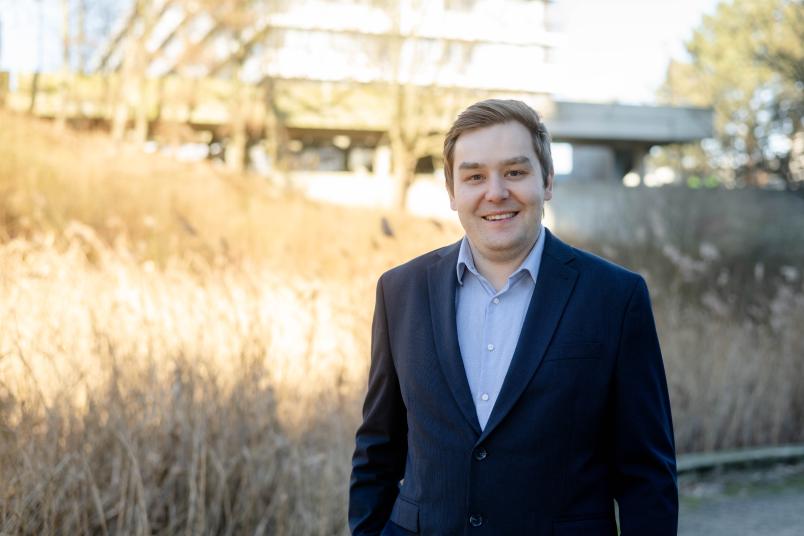
Junior Researcher Award
Reducing the Side Effects of Chemotherapy
Johannes Karges develops anti-cancer agents that work in a targeted manner, rather than adversely affecting the entire body.
Chemical researcher Dr. Johannes Karges from the Department of Inorganic Chemistry at Ruhr Universitäy Bochum, Germany, has been awarded the Breast Cancer Research Junior Award 2023. Aged only 31, the researcher has thus been recognized for his outstanding achievements towards a new active principle of chemotherapeutics. While these drugs have proven effective against cancer cells, they also damage healthy body cells, causing severe side effects. Johannes Karges aims to package the active ingredients in such a way that they accumulate primarily in tumor tissue and activate their cell-damaging properties only when they’re exposed to light. The prize was awarded to Johannes Karges on January 17, 2024 in Hanover.
Dreaded side effects
Approximately half of all chemotherapy drugs used to treat cancer are platinum-based. They act against tumor cells, but they also do damage healthy body cells. This is what causes the dreaded side effects such as nausea, hair loss, liver and kidney damage.
Johannes Karges applies double selectivity in his research: The cell-damaging active substances are packaged in nanoparticles that are not harmful to the body. Moreover, they’re marked in such a way that they accumulate primarily in tumor cells. “They dock onto a specific receptor that is found to be overexpressed in cancer cells,” explains Karges. And they only develop their cell-damaging effect once they’ve been activated. The researchers use light for this purpose. “Ideally, it will no longer be necessary to perform surgery to treat a tumor,” as Johannes Karges outlines his vision. “We’ll administer the drug into the patient’s vein, wait until it has accumulated in the tumor and then position the patient under a red light lamp that specifically activates the compound and triggers the therapeutic effect.” The researchers successfully demonstrated this therapeutic concept in breast cancer cells and in mouse models with a breast cancer tumor. Thanks to the double selectivity of the newly developed active substances, none of the typical side effects were observed in the animal model. The breast cancer tumor, however, was selectively removed in a single treatment.